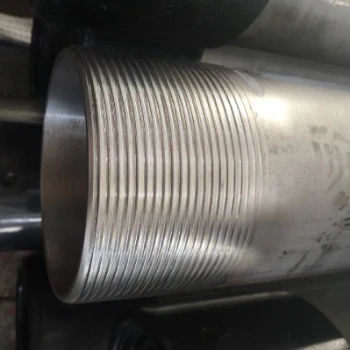- Afrikaans
- Albanian
- Amharic
- Arabic
- Armenian
- Azerbaijani
- Basque
- Belarusian
- Bengali
- Bosnian
- Bulgarian
- Catalan
- Cebuano
- Corsican
- Croatian
- Czech
- Danish
- Dutch
- English
- Esperanto
- Estonian
- Finnish
- French
- Frisian
- Galician
- Georgian
- German
- Greek
- Gujarati
- Haitian Creole
- hausa
- hawaiian
- Hebrew
- Hindi
- Miao
- Hungarian
- Icelandic
- igbo
- Indonesian
- irish
- Italian
- Japanese
- Javanese
- Kannada
- kazakh
- Khmer
- Rwandese
- Korean
- Kurdish
- Kyrgyz
- Lao
- Latin
- Latvian
- Lithuanian
- Luxembourgish
- Macedonian
- Malgashi
- Malay
- Malayalam
- Maltese
- Maori
- Marathi
- Mongolian
- Myanmar
- Nepali
- Norwegian
- Norwegian
- Occitan
- Pashto
- Persian
- Polish
- Portuguese
- Punjabi
- Romanian
- Russian
- Samoan
- Scottish Gaelic
- Serbian
- Sesotho
- Shona
- Sindhi
- Sinhala
- Slovak
- Slovenian
- Somali
- Spanish
- Sundanese
- Swahili
- Swedish
- Tagalog
- Tajik
- Tamil
- Tatar
- Telugu
- Thai
- Turkish
- Turkmen
- Ukrainian
- Urdu
- Uighur
- Uzbek
- Vietnamese
- Welsh
- Bantu
- Yiddish
- Yoruba
- Zulu
what is the difference between casing and tubing?
Understanding the Difference Between Casing and Tubing in Oil and Gas Production
In the oil and gas industry, the successful extraction of hydrocarbons requires a variety of technical components, two of which are casing and tubing. While they may seem similar at first glance, they serve distinct purposes and are integral at different stages of well construction and operation.
Casing The Structural Backbone
Casing refers to the series of steel pipes that are installed in the wellbore during the drilling process. The primary function of casing is to provide structural integrity and stability to the well. Once a well is drilled, casing is cemented into place to protect the borehole from collapse and to isolate underground formations. This isolation is crucial as it prevents the mixing of different geological layers, which could potentially lead to contamination of water supplies or unintentional migration of fluids.
Casing serves several important roles throughout the life of a well. Firstly, it protects both the well and the environment from the potentially harmful effects of drilling fluids, gas, and oil. Secondly, it helps prevent the inflow of groundwater into the well, ensuring that the drilling operations occur within controlled conditions. Casing also allows for the installation of various well completion equipment necessary for production activities.
There are different types of casing, including surface casing, intermediate casing, and production casing, each utilized at various depths and for specific purposes. Surface casing is usually the first layer installed and is designed to protect freshwater aquifers. Intermediate casing provides additional strength as drilling goes deeper, while production casing is set to facilitate the flow of hydrocarbons to the surface.
what is the difference between casing and tubing?

Tubing The Production Pathway
In contrast, tubing is a lighter weight pipe that is installed within the casing after the completion of a well. Its primary purpose is to transport the hydrocarbons from the reservoir to the surface. Tubing is typically smaller in diameter than casing and is designed to withstand higher pressures associated with producing oil and gas.
The tubing string is an essential component of oil and gas production as it provides a direct pathway for the extracted resources. With the tubing in place, operators can run various tools and equipment to manage production, including pumps, valves, and other mechanisms needed to optimize flow rates and enhance recovery. Furthermore, tubing allows for the injection of fluids necessary for enhanced oil recovery processes.
Wells Within Wells
In summary, casing and tubing are both vital components in oil and gas well construction, but they serve different roles. Casing is a robust foundational structure designed to support and protect the borehole and surrounding environment, while tubing acts as the conduit's lifeline, delivering produced hydrocarbons to the surface.
Understanding the differences between casing and tubing is crucial for professionals in the energy sector, as proper selection, installation, and maintenance of these components can significantly impact the efficiency and safety of oil and gas production operations. By ensuring the integrity of both casing and tubing, companies can optimize resource extraction while minimizing environmental risks.
-
Tubing Pup Joints: Essential Components for Oil and Gas OperationsNewsJul.10,2025
-
Pup Joints: Essential Components for Reliable Drilling OperationsNewsJul.10,2025
-
Pipe Couplings: Connecting Your World EfficientlyNewsJul.10,2025
-
Mastering Oilfield Operations with Quality Tubing and CasingNewsJul.10,2025
-
High-Quality Casing Couplings for Every NeedNewsJul.10,2025
-
Boost Your Drilling Efficiency with Premium Crossover Tools & Seating NipplesNewsJul.10,2025







